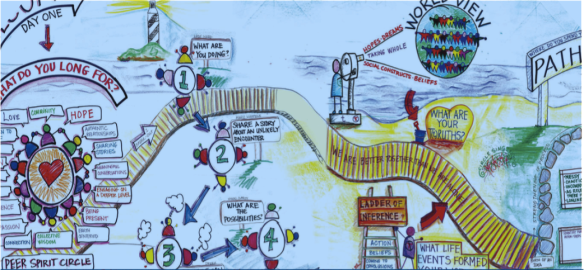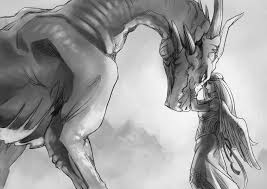Many things can interfere with maintaining strong positive, productive team dynamics and often it has to do with the interpersonal challenges that arise out of lack of clarity of role or around decision-making processes. When things go wrong, trust is compromised and when trust is compromised it is hard to regain. Some teams never recover. And, thankfully, not every team experiences this level of dysfunction either. This post addresses processes for those teams that have and that have the support for the resource and time investment required to recover. Yes, it is possible although not easy.

For senior leadership teams falling into this level of challenge can have devastating impacts personally and professionally for each member of the team. Examples shared here are from consulting work with senior teams experiencing dysfunctional relationships, sometimes so challenging that the professional reputations of everyone on the team was at stake because the issues became widely observed or evident in the organization. In almost every story, team members were barely speaking to each other, tension was high, trust was low, blame was rampant and team members undermined each other in a number of ways. Some of the most meaningful, impactful, rewarding work that Shape Shift Strategies Inc. does is with such teams.
In every team and organization there are two dimensions or polarities that are always at play. This is the polarity between a focus on the task to be done and a focus on tending to the relationship of the team members. Relationship tending is seen as something we should just know how to do and is the first thing sacrificed for money or time. It is also the thing that most often gets in the way of accomplishing the task. People who like each other enjoy working together, are more inspired, motivated and get far more done. They are more likely to have animated conversations that lead to new discoveries and creative solution finding and more likely to look forward to going to work.
For teams in conflict, accomplishing the task is at risk. For teams in conflict that want to address the conflict, it often requires a significant investment of resources and time – the very things that seemed in short supply to begin with – and focus on relationship – the very thing that seemed self evident as not needing tending.
 Addressing the human dynamics of teams in deep conflict is a several stage process that takes thoughtfulness, care and intentionality. The process outlined below is for teams with up to ten or twelve members. Beyond that different processes are needed.
Addressing the human dynamics of teams in deep conflict is a several stage process that takes thoughtfulness, care and intentionality. The process outlined below is for teams with up to ten or twelve members. Beyond that different processes are needed.
Step 1. Individual interviews.
The purpose of the individual interviews is four-fold. One purpose is to give everyone an opportunity to individually tell the story of their experience, not to be confused with the facts of the situation. Each person will tell the story from their perspective or worldview and can get out any frustrations they have, speaking openly and honestly. A second purpose is to provide an opportunity for each individual to reflect on the situation, how they may be contributing to it, what happens if the situation is not resolved. A third purpose is for the consultant to build connection with each individual prior to having the team meet to address the issues. Often, many people on a team will point to an individual as being the primary cause of the problem and these interviews help uncover the system at play and the hidden dynamics. A fourth purpose is to discover the themes and patterns across the individual stories.
The same interview guide is used with each member of the team and usually an hour is allotted for each interview. They can be done in person or on a call. The interview starts in an unusual place – often with what they wanted to do when they were in school, finding out how they got to their current job or career, why that position now, hopes when they started in the job leading up to the current situation and inviting reflection on the future. It is a deep sensing interview, designed to invite them back into their humanity and to go deeper than simply asking them what is wrong or what needs to be fixed now.
Following the interviews, the information is compiled into themes and patterns as an offering back to the team in the first meeting often in a mind map. Team members are assured that nothing will show up in the mind map unless it is heard from at least three people.
Step 2. A first meeting.
The first meeting with the team is always interesting. The team members do not know what to expect. They are nervous. They don’t know what will be revealed and they are anxious about conflict. They know their own perception of the conflict and are sure they will have fingers pointed at them by others. They feel isolated.
We use circle process – with or without a table in the middle. More and more it is circle without a table, without the protective barrier of something in front of them or something to semi hide behind. Inviting them to show up fully. When people show up in an unexpected and unfamiliar form it is immediately disruptive and uncomfortable. As a consultant facilitating this work, you need to be very comfortable with other people’s discomfort and create an environment that helps them breathe through it.
With one team, when the team leader walked into the room she was immediately taken aback. There was a projection table on wheels by one wall. She sat in her chair, also on wheels, rolled back to the projection table, put her coffee on it, awkwardly rolled her chair and the projection table back to the circle as a source of support. I watched with curiosity. At the end of our day and half session, she commented on her own behaviour, noting her initial discomfort and her growing comfort with the form of our meeting as progress was achieved.
We start with a check in. Maybe around each person’s hopes for this process and naming any tension they are carrying. This often immediately begins to surface similarities or common experience. We review the mind map of the themes and patterns, which is usually in the centre of the circle as we begin – with talking pieces in case we choose to use them.
With one team I worked with, it took until the end of the first day of working together for someone to become brave enough to say, “That could have been my interview.” You could hear the collective sigh of relief as everyone else acknowledged the same thing. It was a shock and a relief to them to discover that what they had each been carrying individually was also being held by them collectively – similar experiences, similar fears, similar hopes. Common ground they had not witnessed in a long time and did not know existed until they saw it in front of their eyes.
We use Appreciative Inquiry (AI) because even in the most distressed teams there is always something that has worked or does work. Reminding people of this by asking them what their best experience of collaboration, their best experience of resilience their best experience of team, their best experience of the organization or other relevant topic has been reorients them to what does work and helps them understand they can make it work again while also surfacing what it is each person values about the organization, the team, each other, themselves. As highly intelligent people, individuals are often surprised to find themselves in a situation where they feel like they have failed or are failures and seem to have no strategies for success. It is good to surface what they do know and where they have been successful to create a bridge to the future. We also use AI to collectively generate the principles by which the team wants to engage this work of building or rebuilding their relational field.
By investing time in this , we are creating the foundation for the team to enter the difficult conversations in a healthier space of curiosity, generosity and possibilities rather than defensiveness, debate and blame, where they can hear each other instead of only wanting to be heard. Where the conversation goes from there depends on what is most alive for the team, what has surfaced in the themes and patterns and what the team needs to be able to engage in good work together. When a team is in this level of disarray, these initial meetings focus almost exclusively on tending to relationship. The team has to slow down to go fast later.
Step 3. Ongoing meetings.
Issues and patterns that have become entrenched in a team are not easily shifted. A neutral, external support can bring voice to things the team itself cannot name, can bring new strategies and patterns into an existing situation and can challenge the team in gentle or tough ways about its patterns and interactions with each other.
There are many reasons for ongoing meetings. One is simply that entrenched patterns cannot be shifted in a day. It takes reminding, accountability and learning to trust that new patterns produce different results – like using a check-in and check out process for each meeting. Check-in brings people into the room mentally and emotionally and sets the tone for the conversations that are needed. Check out seals the day, allows people to express what is most present for them – gratitude, reflections, questions. Sometimes check out provides purpose and intention for the next meeting.
Also, a consultant can bring in  patterns of human dynamics that help people name and understand their dynamics,
patterns of human dynamics that help people name and understand their dynamics,
like the divergence-groan zone-convergence framework or surface hidden dynamics through systems mapping or provide strategies for thinking or planning differently like polarity mapping.
Sometimes it is as simple (and difficult) as holding space for the team to be in its own discomfort. One team we worked with, in the first meeting we had in a hotel, the room went completely silent whenever the wait staff came into the room. Not a peep out of anyone. The wait staff were asked to come and serve the break or the meals and leave directly afterward, leaving clearing the room for later. Over the course of the first three meetings, the tension in the room dissolved and conversation continued no matter who was in the room. With this team we used a parking lot for the conversations that began to spin around without resolution and we moved to the next conversation. Later we came back to the parking lot and it was amazing to see how easily most of those issues could then be resolved. More foundation and less edge.
Another benefit of meeting with the team on a regular basis is that the team gets to surface and review its progress – something not always tended to in the regular course of meetings and interactions. We also get to identify the dynamics that get in the way of team effectiveness – like lack of clarity of role or no discernable, reliable decision making processes. Once the team addresses these issues there is more ease in the relationships and a greater possibility of having a conversation rather than making assumptions. The team develops its own common language and short cuts into conversations or dynamic identification. One team I worked with would slide from one conversation to another with no clear resolution, agreement or decision. After having this pointed out to them several times, they began to notice their own pattern and took themselves back to finish the first conversation before moving to the next. They also began to do this with the teams they led in the organization, changing the tone of the meetings and the relationships.
Initially the consultant might have to offer the purpose or intention for each meeting, to attune people to where they are in the process and keep things on track. Before too long, the team can collectively elicit the purpose and intention on its own by tuning into what’s been going on since the last meeting and identifying anything they feel needs their collective attention.
As soon as it is reasonably possible, the focus of the meeting needs to tune back into the task(s) or work of the team and find a reasonable balance between task and relationship tending. As people see the impact of relationship tending on moving the task along or easing work flow, they are more willing to invest time there too.
Step 4. Concluding the process.
At some point, the consultant is no longer needed on a regular basis, often four to six months into the process. The team should become self-accountable with shared leadership and shared responsibility.
With one team, our last meeting was in a boardroom at a hotel. The leader, who had quite an adverse reaction to the first circle, remembered there was a big board table in the room and was feeling regret that it would impact our circle, only to turn up and find out the board table had been pushed back against the wall, leaving room for our circle.
Another team was able to use their resources more effectively. When trust was low, three or four members of the team would show up to a meeting when realistically one or two would do. As they addressed their issues and grew trust, they were able to trust that the perspective of the team could be conveyed by one individual. And, instead of undermining each other in meetings with others – behaviour which contributed to the whole organization seeing their dysfunction – they began to support each other, even when they did not fully know where their team member was going. Instead of challenging them in front of others they would offer something like, “I’m sure if my teammate has offer this as a possibility, it has been well thought out and we should all pay attention.”
The whole organization began to see and sense the difference before they could really articulate what they were seeing. Like magic. Only it wasn’t magic. It was damned hard work that paid off.

Not all teams need this degree of intervention and many times teams later end up disbanded because team members take on new challenges or sometimes there is a re-organization in the company that breaks the team up. But the skills learned during this kind of experience are transferable to many different situations and individuals see, and others witness, that they have grown their leadership capacity.




 patterns of human dynamics that help people name and understand their dynamics,
patterns of human dynamics that help people name and understand their dynamics,




